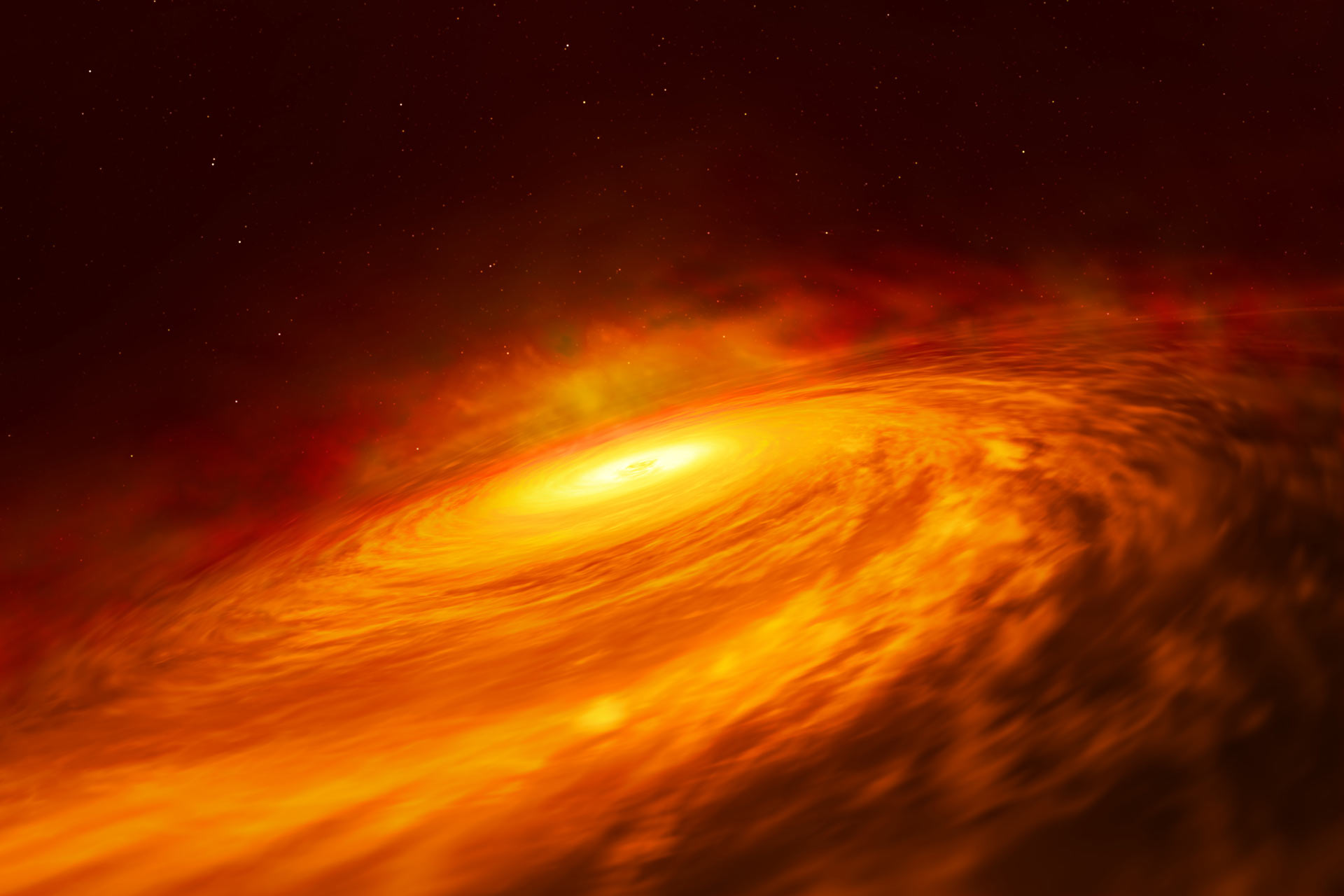
What is thin disk accretion? Thin disk accretion is a process where gas and dust spiral inward toward a central object, like a star or black hole, forming a flat, rotating disk. This disk is "thin" because its height is much smaller compared to its radius. Why does it matter? Thin disk accretion plays a crucial role in the growth of celestial bodies and the emission of energy. How does it work? As material in the disk loses angular momentum, it moves inward, heating up and radiating energy. Where can you see it? Thin disk accretion is observed in various astronomical settings, from young stars to supermassive black holes at galaxy centers. Understanding this process helps scientists learn about the formation and evolution of the universe.
What is Thin Disk Accretion?
Thin disk accretion is a fascinating process in astrophysics where matter spirals into a central object, like a black hole or a star. This process plays a crucial role in the growth and evolution of celestial bodies.
- Thin disk accretion occurs when gas and dust form a flat, rotating disk around a central object.
- The disk is "thin" because its height is much smaller than its radius.
- This process is essential for the formation of stars and planets.
- Thin disk accretion is driven by the loss of angular momentum, allowing material to spiral inward.
How Does Thin Disk Accretion Work?
Understanding the mechanics behind thin disk accretion can be complex, but breaking it down into simpler facts can help.
- Viscosity within the disk causes friction, heating the material and causing it to glow.
- The energy released by this friction can be observed as electromagnetic radiation.
- Magnetic fields can influence the movement of material within the disk.
- The inner regions of the disk move faster than the outer regions, creating shear forces.
Importance in Astrophysics
Thin disk accretion is not just a theoretical concept; it has practical implications in the field of astrophysics.
- It helps explain the high-energy emissions from quasars and active galactic nuclei.
- Thin disk accretion is a key mechanism in the growth of supermassive black holes.
- Observations of accretion disks provide insights into the properties of black holes.
- The process can also help us understand the formation of planetary systems.
Observational Evidence
Scientists have gathered substantial evidence to support the existence and importance of thin disk accretion.
- Telescopes like Hubble have captured images of accretion disks around young stars.
- X-ray observatories have detected emissions from the inner regions of accretion disks.
- Radio telescopes have observed jets of material being ejected from accretion disks.
- Spectroscopic studies reveal the composition and velocity of material in the disk.
Challenges and Mysteries
Despite significant advancements, thin disk accretion still presents several challenges and mysteries.
- The exact mechanism of angular momentum transfer is not fully understood.
- The role of magnetic fields in accretion disks is still being studied.
- The formation of jets and outflows from accretion disks remains a topic of research.
- Understanding the initial conditions that lead to disk formation is complex.
Real-World Applications
Thin disk accretion isn't just an abstract concept; it has real-world applications and implications.
- It helps in the search for exoplanets by studying the disks around young stars.
- Understanding accretion processes can improve models of galaxy formation.
- It aids in predicting the behavior of material around black holes.
- Insights from thin disk accretion can inform the design of future space missions.
Fun Facts About Thin Disk Accretion
Let's dive into some intriguing and lesser-known facts about thin disk accretion.
- Accretion disks can be found around objects as diverse as white dwarfs, neutron stars, and black holes.
- The temperature in the inner regions of an accretion disk can reach millions of degrees.
- Some accretion disks are so bright they outshine the stars they orbit.
- The study of accretion disks has led to the discovery of new types of celestial objects.
- Thin disk accretion can produce powerful jets that travel at nearly the speed of light.
Final Thoughts on Thin Disk Accretion
Thin disk accretion is a fascinating process that plays a crucial role in the universe. It helps us understand how black holes grow, how stars form, and even how galaxies evolve. The thin disk model, with its efficient energy conversion and angular momentum transfer, offers a clear picture of these cosmic phenomena.
By studying thin disk accretion, scientists can make predictions about the behavior of celestial objects and the dynamics of the universe. This knowledge not only satisfies our curiosity but also advances technology and scientific methods.
So, next time you gaze at the night sky, remember the incredible processes at work, shaping the cosmos. Thin disk accretion is just one piece of the puzzle, but it's a vital one, helping us unlock the mysteries of space.
Was this page helpful?
Our commitment to delivering trustworthy and engaging content is at the heart of what we do. Each fact on our site is contributed by real users like you, bringing a wealth of diverse insights and information. To ensure the highest standards of accuracy and reliability, our dedicated editors meticulously review each submission. This process guarantees that the facts we share are not only fascinating but also credible. Trust in our commitment to quality and authenticity as you explore and learn with us.
